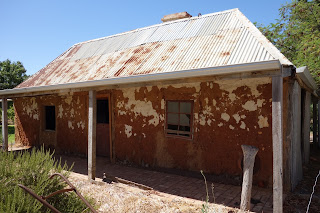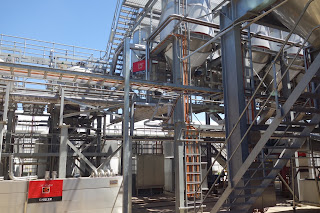A day in "paradise" - otherwise known as a day in the Barossa Valley!
The Barossa valley is a major wine-producing region located about 60 kms northeast of Adelaide. The history of the Barossa region is unique, having been settled at first by a few British free settlers followed by large number of Prussian Lutherans who came to find freedom of religion. The legacy of strong Christian faith, industry and thrift made the area a strong community which continues to the present.
Colonel William Light, South Australia's Surveyor General reached the area in 1837. The area reminded him of Spain where he served years earlier during the Napoleonic wars. He named the area the Barrosa, after the scene of a battle in Spain, but a spelling mistake by a clerk in Adelaide result in the name Barossa.
Many Germans migrated to South Australia and the Barossa during the 1840s to 1860s. The first settlers were mainly farmers and trades people and their settlements were agricultural with a strong emphasis on self sufficiency. Wheat was the main cash crop in the early days and fruit growing also developed as an important industry. Some of the German settlers had experience in viticulture in their homeland and soon planted vines and made wine. However it took many years before the wine industry became dominant. Today the Barossa is a thriving wine producing area.
I started my day in a little town in the Barossa valley called Nuriootpa. I know this photo isn't all that great, but if you look at the right side you will see a building with a sign that says "Wine Education Centre" and in the background on the left you can see some grape vines. Nothing about this seems unusual given where I am - except what this photo doesn't show is that this is the playground of Nuriootpa High School! Wouldn't you like to go to high school where, in Year 12, you can learn all about the wine industry. In fact, the High School produces enough quantity of quality wine to sell commercially.
From Nuriootpa I began my day of wine tasting. I went to four different wineries and tasted many, many wonderful wines!
First today was Gibson Wines. On the property at Gibson Wines there is the old, original cottage, believed to have been built in the 1830s, that is slowly being restored to its previous splendour.
My second winery for the day might look a bit familiar to those of you who know what one of my most favourite wines is.
Next I went to Ross Estate
and the last stop was at Linfield Road Wines.
After a very lovely day in the Barossa I decided to go on a little walk of the area where my motel is located. The area is called North Adelaide, a predominantly residential area situated just north of the River Torrens. The area was first surveyed in 1837 and it was - and many will say still is - the part of Adelaide where the elite and wealthy lived.
Like Melbourne, Adelaide has published a series of self-guided walks and there are 6 walks that are within North Adelaide alone - there are so many beautiful, historical buildings to see.
On the walk that I took there were 35 different buildings highlighted. I won't bore you with all of them, but hopefully this sampling will give you an idea of what the area is like.
Built in 1877 this villa was built for a brewer who owned the Lion Brewery. The Lion Brewery and malthouse were built in 1871 and the hotel was built in 1881.
This large, conspicuous mansion was built in 1889 for a prominent city businessman.
This eye-catching mansion was built in 1908 and has wonderful detailing.
This one was built during the speculative building boom of the early 1880s.
This cottage was built prior to 1851. Its location directly on the footpath gives the dwelling prominence in the streetscape.
This hotel was built in 1881 and it was designed to look like no other in the city, with its stunning colonnade to the first floor.
Built in 1878 for the newspaper editor, this house presents itself from the street as being only one storey. However the back of the house affords fabulous views across the River Torrens to the City and beyond to the Adelaide Hills.
And at the end of the walk was one of the most prominent townscape features of North Adelaide, the Congregational Church, built in 1861.
And this is the view I was just mentioning. You can't see the river now because of all the trees, but you can see over the city and towards the Adelaide Hills from many locations here in North Adelaide.



















No comments:
Post a Comment